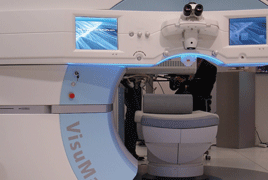Purpose: To analyze and compare visual acuity, refractive outcomes and higher-order aberrations after standard and wavefront-guided Femto-LASIK at 1, 3, and 12 months postoperatively.
Methods: Study of 95 consecutive eyes of myopic patients (-0.5 to -7.0 D), who underwent Femto-LASIK with standard ablation profile (STA) (49 eyes) or wavefront-guided ablation (WFG) (46 eyes) using femtosecond laser LDV Ziemer and excimer laser MEL 80 Zeiss with iris registration. Primary outcome measures were uncorrected distance visual acuity (UDVA), corrected distance visual acuity (CDVA), manifest refraction and higher-order ocular aberrations (HOAs). HOAs were measured with Hartmann-Shack wavefront aberrometer WASCA, HOAs analyzed at 6 mm pupil, assessed total HOAs root mean square (RMS HOAs) and individual Zernike coefficients.
Results: Preoperatively, there were no significant differences between STA and WFG groups in UDVA, CDVA, manifest refraction or HOAs. As compared with preoperative values, spherical aberration Z(4,0) increased by 0.24 μm in both groups and it is the main increasing factor of RMS HOAs (0.05 μm in STA group and 0.08 μm in WFG group). Safety and efficacy index is 1.0 in both ablation profiles. Postoperatively, median UDVA and CDVA achieved 1.2. No patient lost line of CDVA at 12 month postoperatively. All patients were within ± 0,5 D of emmetropia at 12 months. Significant differences were not found between STA and WFG in UDVA, CDVA, manifest refraction or HOAs at 1, 3 and 12 month.
Conclusions: Both wavefront-guided and standard Femto-LASIK with LDV and MEL 80 platform have shown very good efficacy and safety. Myopic Femto-LASIK only slightly increases RMS HOAs, especially by induction of spherical aberration. Both methods have equivalent postoperative aberration score one year postoperatively.

